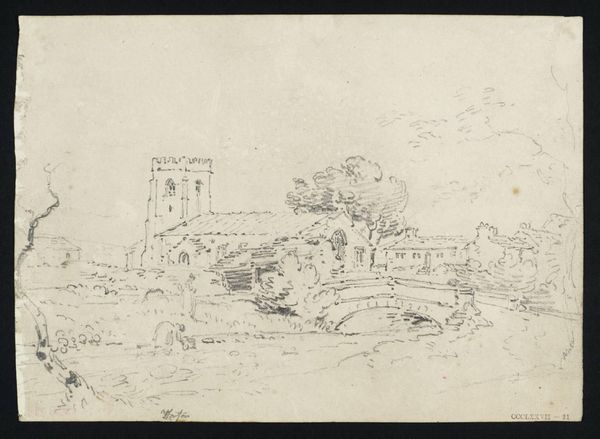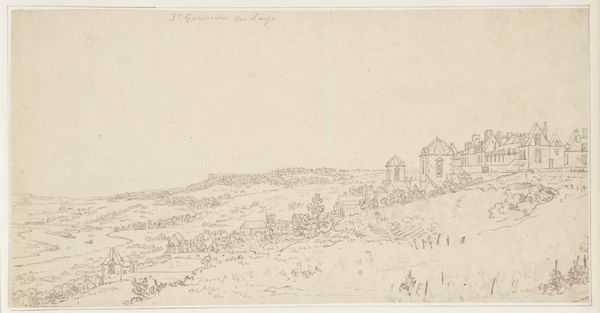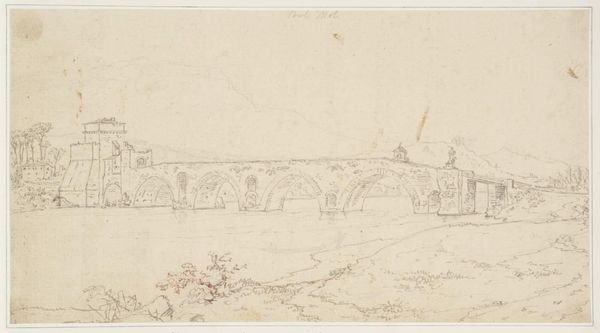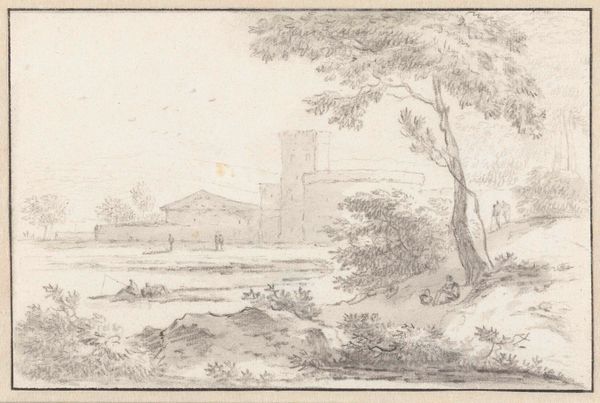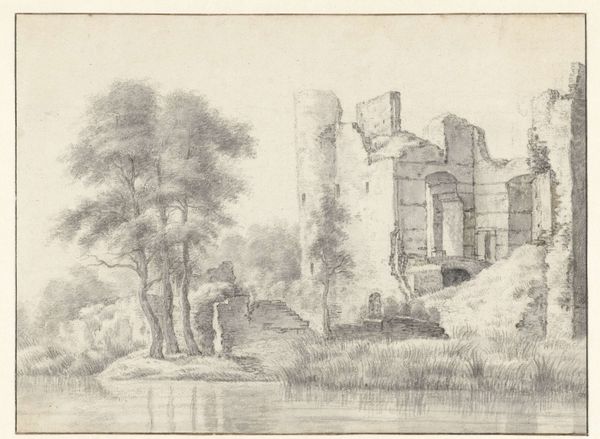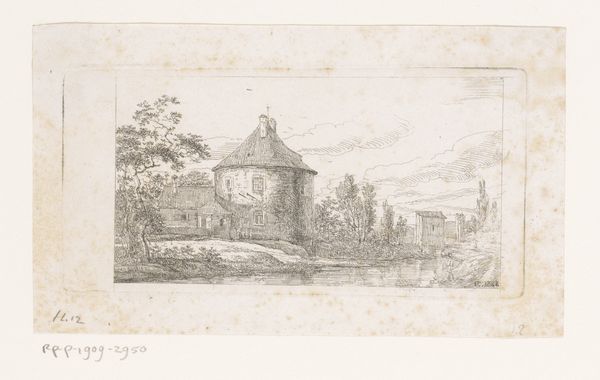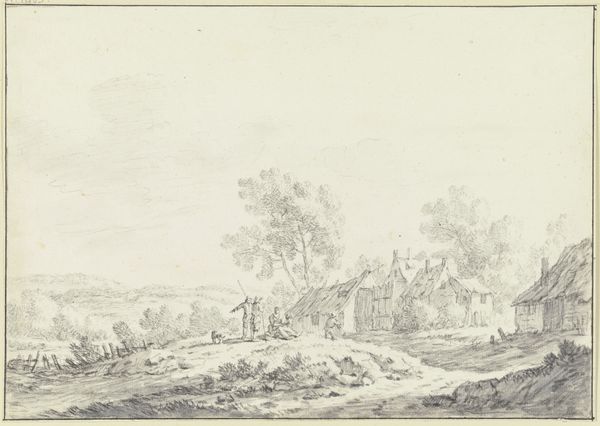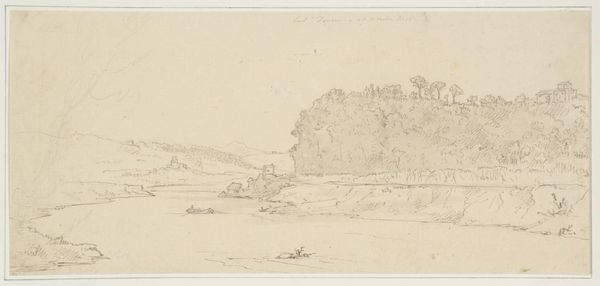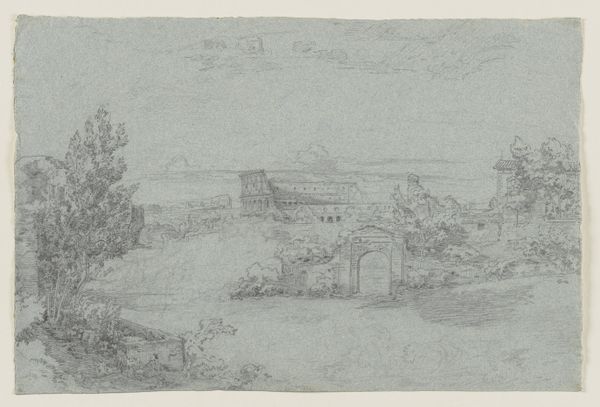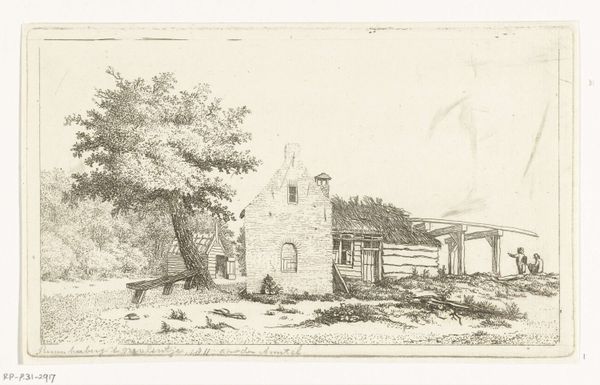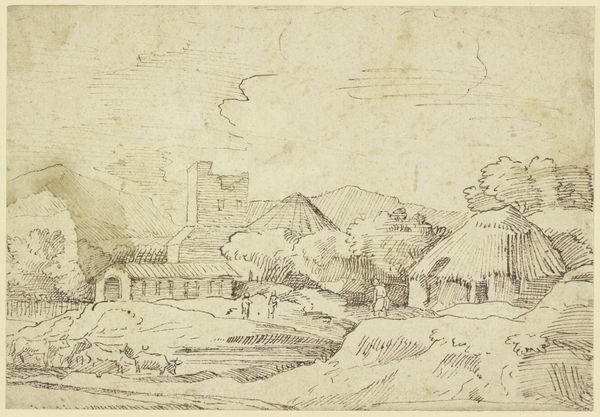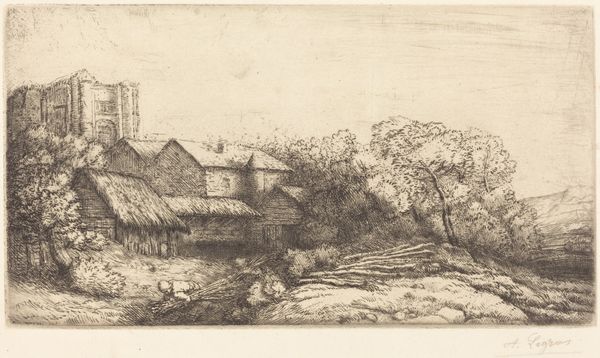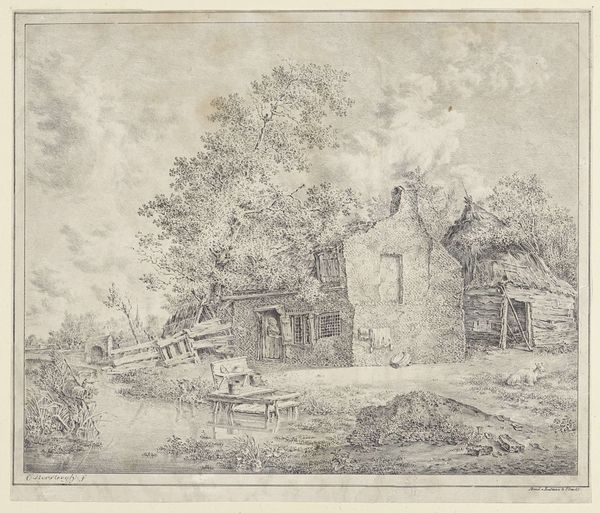
Dimensions: support: 181 x 337 mm
Copyright: CC-BY-NC-ND 4.0 DEED, Photo: Tate
Curator: Looking at William Marlow's "Marly. The End of the Viaduct," the initial impression is one of faded grandeur, wouldn't you agree? Editor: Absolutely, there's a sense of quietude, a wistful atmosphere conveyed through those delicate lines. It's the kind of scene that evokes reflections on power, decline, and the aesthetics of decay. Curator: Marlow, who lived from 1740 to 1813, captured the socio-political undercurrents of his time, and landscape painting was very fashionable. This work, held at the Tate, allows us to consider the function of the picturesque in shaping perceptions of place. Editor: I agree. It's as if he's inviting the viewer to engage with a narrative about class and land ownership. I see a lone figure, perhaps a worker, juxtaposed against the mounted rider. There is a hint of the social hierarchy embedded within the composition. Curator: Yes, the figures do offer compelling narrative prompts. But I also see it in terms of the institution of art. Marlow created works for consumption by the upper classes, celebrating certain social positions. Editor: It's fascinating how a seemingly serene landscape reveals these layers of meaning. Curator: Indeed. Marlow's piece acts as a visual record and a complex commentary on society. Editor: A quiet scene speaking volumes, even now.
